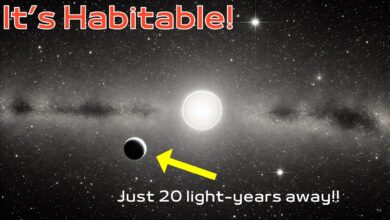Is This Final Proof? Stunning 2025 Evidence About The Shroud Of Turin
The Shroud of Turin: New Evidence That Could Rewrite History (2025 Investigation)
For centuries, the Shroud of Turin has stirred both devotion and controversy. Often dismissed as a clever medieval forgery, this ancient linen was locked away in darkness, hidden in a cathedral vault. Upon its surface is the haunting image of a crucified man—not created by ink, paint, or dye—but somehow scorched into the fibers in a way science has long struggled to explain. Some call it the greatest relic in Christianity. Others call it a myth. But in 2025, new scientific breakthroughs have reignited global fascination and may forever alter the conversation.
The Relic That Refuses to Fade
The Shroud resides in the Cathedral of St. John the Baptist in Turin, Italy. For over 600 years, it has been a paradox—simultaneously a symbol of profound faith and an object of intense scientific scrutiny. Despite relentless attempts to disprove its authenticity, the Shroud remains the most analyzed religious artifact in history. After a ten-year silence—since its last public exhibition in 2015—something shifted. Hidden from the public eye, scientists quietly resumed their research. By 2025, a historic collaboration between physicists, textile experts, chemists, and theologians began to reshape our understanding.
Questioning the 1988 Carbon Dating
In 1988, radiocarbon dating conducted by three laboratories dated the cloth to between 1260 and 1390 A.D., fueling claims that the Shroud was a medieval hoax. But problems quickly surfaced. The tested sample was taken from a corner of the cloth—an area suspected of being repaired during the Middle Ages. Textile experts in 2025, equipped with advanced microscopy, discovered that the weave, color, and aging pattern of the sample differed from the main body of the cloth. In short, the tested fragment may not have been original linen at all.
Filmmaker and Shroud advocate David Rolfe declared the 1988 results “one of the greatest scientific blunders of the century.” New evidence strongly suggested that the original radiocarbon tests were compromised by contamination and flawed sampling.
New Science, New Conclusions
Enter Dr. Liberato De Caro and his team at Italy’s Institute of Crystallography. Using X-ray diffraction—a cutting-edge technique for analyzing the molecular structure of ancient textiles—they determined that the linen’s aging process matches that of cloths known to be approximately 2,000 years old. This groundbreaking study was peer-reviewed and published in 2025, challenging the long-standing carbon-dating verdict. According to De Caro, “We now have tools that see far deeper into the past. Radiocarbon dating alone is no longer sufficient for the Shroud.”
Fabric from the Time of Christ
Further textile analysis identified the Shroud’s unique herringbone twill weave, a style rare in medieval Europe but consistent with burial cloths used in first-century Judea and Syria. This type of high-quality linen would not have been used by commoners—it was reserved for the wealthy or for ceremonial purposes. Could this have been the same cloth bought by Joseph of Arimathea, the man who, according to the Gospels, wrapped Jesus’ body in linen and placed it in the tomb?
Pollen and Dust—A Middle Eastern Origin
Microscopic analysis revealed embedded pollen grains that match plant species native to ancient Jerusalem, not to France or Italy. Further studies uncovered mineral dusts and environmental residues unique to the Judean wilderness, offering compelling geographic validation. Even bacterial DNA found on the Shroud matched the microbiome of arid Middle Eastern regions.
The Image: A Mystery Still Unsolved
What astonishes scientists most is the image itself. There are no pigments, brush strokes, or chemical compounds that indicate human creation. Under UV light and electron microscopes, the image appears as a negative imprint, like a photograph—but one with no logical origin. The discoloration affects only the outermost fibers of the cloth—less than a tenth of a human hair in depth—without penetrating deeper.
Despite decades of attempts, no artist or researcher has been able to replicate it. Even NASA image specialists concluded in the 1970s that the Shroud’s image contains three-dimensional spatial data, consistent with the contours of a real human body—something a two-dimensional artwork could not capture.
A Burst of Light? The 34-Billion-Watt Theory
In 2025, physicist Paolo Di Lazzaro and his team offered one of the most startling conclusions yet. After over a decade of experiments, they theorized that the image could only have formed through a short, intense burst of ultraviolet radiation—lasting less than a billionth of a second. The energy required? At least 34 billion watts. For comparison, that’s the concentrated power of a nuclear reactor in a blink. No natural event or machine is known to produce such an effect without incinerating the cloth.
Theories now align eerily with Gospel descriptions. Matthew wrote: “His appearance was like lightning, and his clothes were white as snow.” Could the Shroud be the byproduct of the Resurrection itself—a moment of pure light?
Blood and Wounds Confirm Crucifixion
Forensic experts confirm that the stains on the Shroud are indeed real human blood, type AB, common among Middle Eastern populations but rare in Europe. The blood contains high levels of bilirubin, indicating severe trauma and suffering. The body shows over 100 scourge marks, consistent with Roman flagellation tools. The punctures on the scalp match a crown of thorns. The wrist wounds, not the palms, are anatomically accurate for crucifixion. The side wound matches a spear thrust, just as described in the Gospel of John.
A 3D Story of Pain and Power
Every wound, every mark on the Shroud aligns with the Gospel account of Jesus’ Passion. And yet, the Shroud is not merely religious; it is forensic, visual, and scientific. In 2025, AI-driven imaging reconfirmed the 3D nature of the image, providing further evidence that the Shroud was wrapped around a real human body. No known technique, ancient or modern, can reproduce this effect.
The Final Anomaly: Light Without Fire
Perhaps most perplexing of all is the heat signature found on the cloth. Mass spectrometry revealed unusual proteins that suggest exposure to intense, rapid heat, but without any signs of burning or combustion. Once again, the evidence suggests an event far beyond what modern science can explain.
Conclusion: A Witness Beyond Time
The Shroud of Turin continues to defy explanation. It is not just an artifact; it is a silent witness—of pain, of devotion, and perhaps of something miraculous. Whether one sees it as evidence of resurrection or simply as an ancient burial cloth, 2025 has made one thing clear: the Shroud deserves a place at the center of both faith and science, not as a relic of legend, but as a mystery that may be very, very real.




